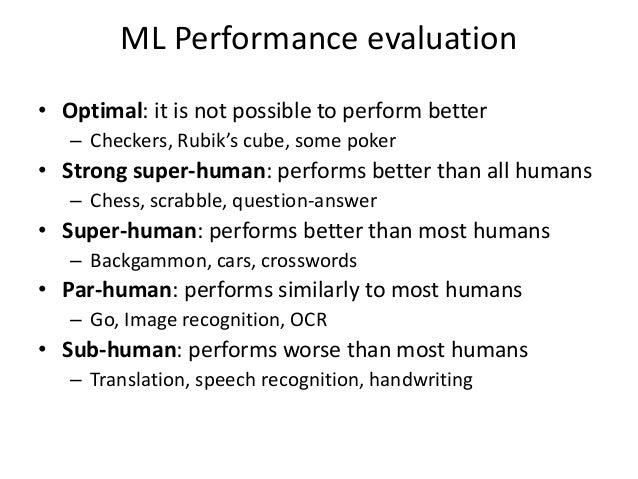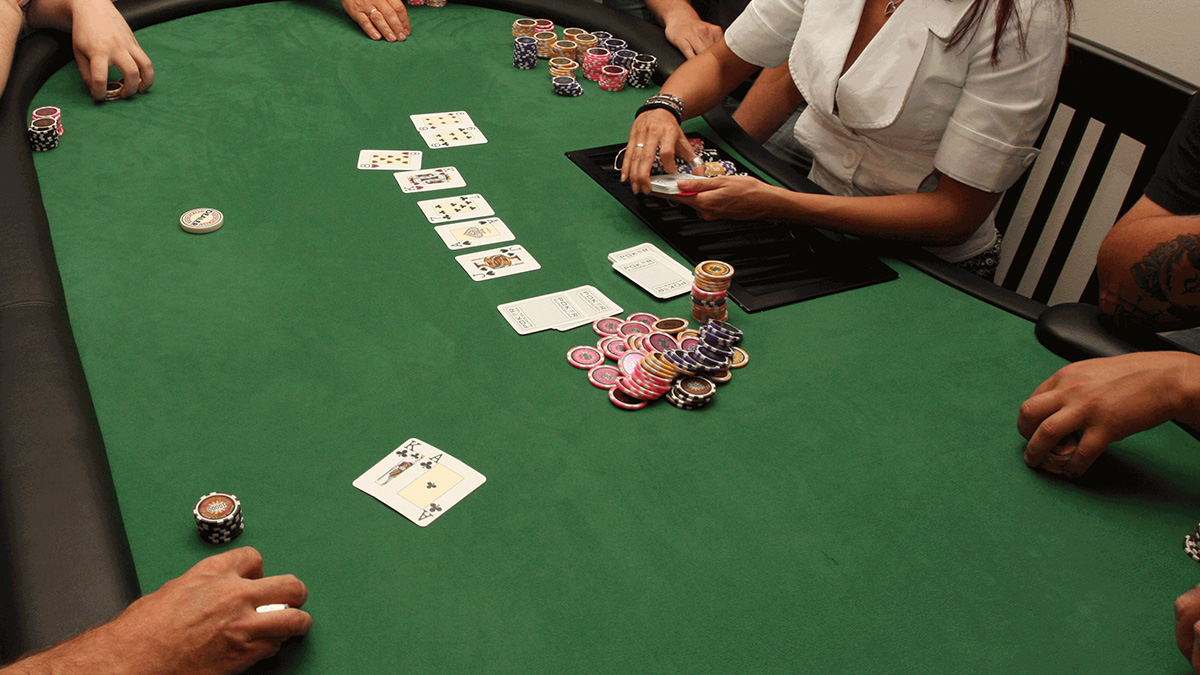Poker Theorems
The fundamental theorem of poker is definitely the most important of any. Basically, it says that if you make the decision that you would have made if you could see your opponent’s cards, that’s good; also, if your opponents make decisions that is.not. what they would do if they saw your cards, that’s good too. Introduction to the Fundamental Theorems of Poker series. This is an advanced theory series that revisits basics concepts in more detail.
Morton's theorem is a poker principle articulated by Andy Morton in a Usenet poker newsgroup. It states that in multi-way pots, a player's expectation may be maximized by an opponent making a correct decision.
The most common application of Morton's theorem occurs when one player holds the best hand, but there are two or more opponents on draws. In this case, the player with the best hand might make more money in the long run when an opponent folds to a bet, even if that opponent is folding correctly and would be making a personal mistake to call the bet. This type of situation is sometimes referred to as implicit collusion.
Morton's theorem contrasts with the fundamental theorem of poker, which states that a player wants their opponents to make decisions which minimize their own expectation. The two theorems differ in the presence of more than one opponent: whereas the fundamental theorem always applies heads-up (one opponent), it does not always apply in multiway pots.
The scope of Morton's theorem in multi-way situations is a subject of controversy.[1] Morton expressed[specify] the belief that his theorem is generically applicable in multi-way pots, so that the fundamental theorem rarely applies except for heads-up situations.
An example[edit]
The following example is credited to Morton,[2] who first posted a version of it[3] on the Usenet newsgroup rec.gambling.poker.
Suppose in limithold'em a player named Arnold holds A♦K♣ and the flop is K♠9♥3♥, giving him top pair with best kicker. When the betting on the flop is complete, Arnold has two opponents remaining, named Brenda and Charles. Arnold is certain that Brenda has the nutflush draw (for example A♥J♥, giving her 9 outs), and he believes that Charles holds second pair with a random kicker (for example Q♣9♣, 4 outs — not the Q♥). The rest of the deck results in a win for Arnold. The turn card is an apparent blank (for example 6♦) and the pot size at this point is P, expressed in big bets.
When Arnold bets the turn, Brenda, holding the flush draw, is sure to call and is almost certainly getting the correct pot odds to do so. Once Brenda calls, Charles must decide whether to call or fold. To figure out which action he should choose, we calculate his expectation in each case. This depends on the number of cards among the remaining 42 that will give him the best hand, and the current size of the pot. (Here, as in arguments involving the fundamental theorem, we assume that each player has complete information of their opponents' cards.)
Charles doesn't win or lose anything by folding. When calling, he wins the pot 4/42 of the time, and loses one big bet the remainder of the time. Setting these two expectations equal and solving for P lets us determine the pot size at which he is indifferent to calling or folding:
When the pot is larger than this, Charles should continue; otherwise, it's in his best interest to fold.

To figure out which action on Charles' part Arnold would prefer, we calculate Arnold's expectation the same way:
Arnold's expectation depends in each case on the size of the pot (in other words, the pot odds Charles is getting when considering his call). Setting these two equal lets us calculate the pot size P where Arnold is indifferent whether Charles calls or folds:
When the pot is smaller than this, Arnold profits when Charles is chasing, but when the pot is larger than this, Arnold's expectation is higher when Charles folds instead of chasing.
Hence, there is a range of pot sizes where both:
(a) it's correct for Charles to fold, and(b) Arnold makes more money when Charles (correctly) folds, than when he (incorrectly) chases.
This can be seen graphically below.
The range of pot sizes marked with the X's is where Arnold wants Charles (C) to fold correctly, because he loses expectation when Charles calls incorrectly.
Analysis[edit]
In essence, in the above example, when Charles calls in the 'paradoxical region', he is paying too high a price for his weak draw, but Arnold is no longer the sole benefactor of that high price — Brenda is now taking Charles' money those times when Brenda makes her flush draw. Compared to the case where Arnold is heads up with Charles, Arnold still stands the risk of losing the whole pot, but he is no longer getting 100% of the compensation from Charles' loose calls.

It is the existence of this middle region of pot sizes, where a player wants at least some of their opponents to fold correctly, that explains the standard poker strategy of thinning the field as much as possible whenever a player thinks they hold the best hand. Even opponents with incorrect draws cost a player money when they call their bets, because part of these calls end up in the stacks of other opponents drawing against them.
Because Arnold is losing expectation from Charles' call, it follows that the aggregate of all other opponents (i.e., Brenda and Charles) must be gaining from Charles' call. In other words, if Brenda and Charles were to meet in the parking lot after the game and split their profits, they would have been colluding against Arnold. This is sometimes referred to as implicit collusion. It should be contrasted with what is sometimes called schooling. Schooling occurs when many opponents correctly call against a player with the best hand, whereas implicit collusion occurs when an opponent incorrectly calls against a player with the best hand.
One conclusion of Morton's theorem is that, in a loose hold'em game, the value of suited hands goes up because they are precisely the type of hand that will benefit from implicit collusion.
See also[edit]
Notes[edit]
- ^For example, see 'Understanding The Nature Of Poker By Playing Against Everyone In the World'Archived 2002-03-21 at the Wayback Machine by Mike Caro from pokerpages.com
- ^Going Too Far & Implicit Collusion from rec.gambling.poker via Google Groups.
- ^Some numbers have been changed to allow for complete information.
Online Poker » Poker Strategy » Theories » Fundamental Theorem
The Fundamental Theorem of Poker is a general poker theory first introduced by David Sklansky in his book, The Theory of Poker. This theory states:
'Every time you play a hand differently from the way you would have played it if you could see all your opponents' cards, they gain; and every time you play your hand the same way you would have played it if you could see all their cards, they lose.
Conversely, every time opponents play their hands differently from the way they would have if they could see all your cards, you gain; and every time they play their hands the same way they would have played if they could see all your cards, you lose.”
So what all of this means is that the action you take should be no different then the one you'd take if you were able to see your opponent's hole cards.
• If you had a worse hand in comparison to your opponent's hand, you'd fold.
• If your hand were better than your opponent's hand, you would raise.
• If both you and your opponent had marginal hands, but your opponent's marginal hand was better, you would bluff.
Now, obviously you cannot see your opponent's hole cards. But you can hand read and analyze board textures. The better you become at both of these skills, the more you can play as if you can see your opponent's card thus playing as 'perfect poker' as possible.
To further put this theory into perspective, let's look at a couple examples. Please be aware that variables such as player tendencies, hand ranges and special plays are excluded for the sake of argument.
Example Number 1
In this example, say you have 99 under the gun in a 6 handed ring game. You make a standard 4x raise and are flatted by the player on the button who has AK off suit. The blinds fold and you see a flop of 2-6-9 rainbow giving you top set. You are first to act, what do you do here?
The best option would be to check.
The reason why a check is the best option is because the flop is dry and your opponent only has ace high. Leading out and betting would likely cause most opponents to fold allowing them to play 'perfect poker' (as if they can see your cards). You don't want to fold out worse hands than yours, but want to keep worse hands in attempt to earn value for your hand. Checking here could possibly induce a bluff on the flop or on the turn. Better yet, if an ace or king peels on the turn, you'll likely be able to bet and get value for your hand since a player holding AK on a 2-6-9-A/K board is likely to feel as if they're ahead.
Example Number 2
In this hand, say you have AA and your opponent has KJ suited. You raise preflop, your opponent calls and you see a flop of K-9-8 of two suits, one of which gives your opponent a flush draw. What's your move here?
The best play is to bet.

You would want to bet here for several reasons.
• You want to get value for your pocket aces from worse hands. Hands that will call a bet here include the pair of kings that your opponent has. If you couldn't see your opponent's cards, other hands to consider would be TJ, QT, QJ or even T7.

• You want to charge for the flush draw, aka protect your aces. Your opponent has a flush draw to go along with top pair so he's likely to come along. With that in mind, you want to make sure you bet enough to give incorrect odds to chase that flush.
Example Number 3
In this last example, you have 22, raise preflop and get one caller with TT in the cutoff. You see a flop of A-Q-7 rainbow. You are first to act, what is your move here?
You would want to bet (continuation bet).
Poker Theorems Games
Betting is definitely the best option. While your 22 definitely has showdown value, you can see that if you go to showdown you won't win the hand since your opponent has TT. So, this is a spot where you turn your hand into a bluff and bet. Taking into consideration that there are two over cards on the board and you raised preflop, it's a high possibility that your opponent will lay down his hand.
On a drier board like A-9-3, you would still bet. Your opponent would likely come along with his TT since he won't be sure you have the ace. In this situation, if another over card fell on the turn (another scare card for TT), you would actually double barrel here giving your opponent more reason to fold his under pair.
Using the Fundamental Theorem of Poker
Poker Theory And Analytics Mit
The whole idea behind the Fundamental Theorem of Poker is to play as if you can see your opponent's hole cards or in other words, play perfect poker. While you'll never be able to play perfect poker, you can get close if you use the info available to you to put your opponents on a hand range and make the most profitable play based on how the board has improved that range. Then, and only then, will you be playing the most optimal form of poker.